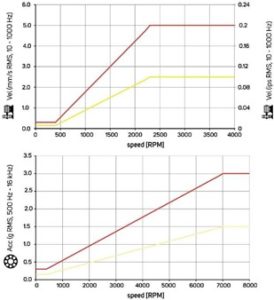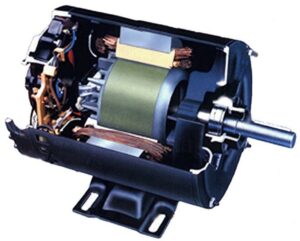Burnt engine and MCM in sensorless predictive maintenance
A case of a blown engine and MCM in predictive maintenance without sensors is the topic addressed in this article.
The MCM Monitoring System
MCM is a technology of analysis of electric motors recent, that works based on Artificial Intelligence that compares the real engine, to be monitored, with a mathematical model of the engine, running up to 600 different load conditions. This mathematical model is obtained from a learning period lasting a few days.
The MCM Monitoring and Diagnostic System is also designed to detect electrical failures in motors., in response to the limitations of vibration measurements whatm vibration analyzers . In addition to the electrical failure modes, also detects mechanical failure modes the engine or driven machinery. and therefore a technology that completes the vibration analysis.

Burnt engine and MCM – Working principle
To perform the analysis of electric motors MCM monitor uses a combination of dynamic waveforms for voltage and current, along with learned models, to detect faults in the motor or the driven equipment. Learning is supported by an additional database, if the monitor has been installed in an already faulty engine. The monitor detects differences between the observed current characteristics and the characteristics learned and relates these differences failed.
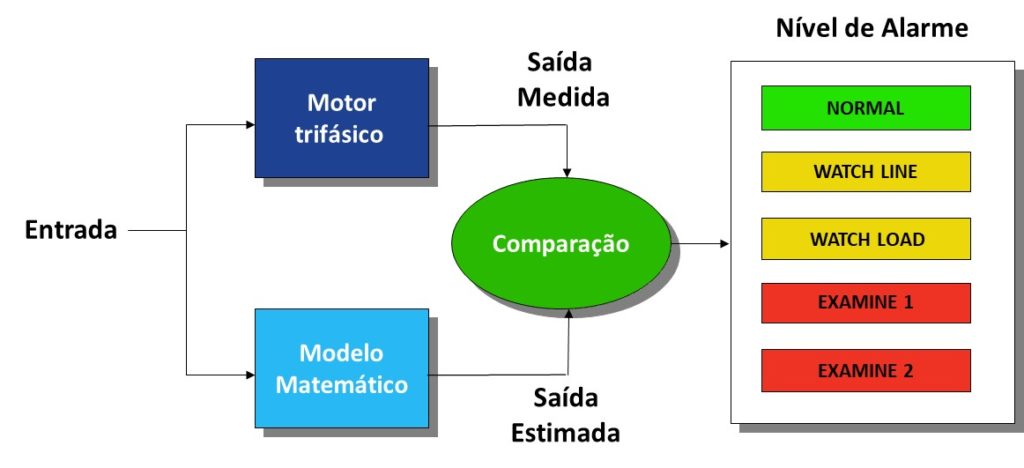
Engine fault detection is based on an engine model, learned by the monitor, physics-based, wherein the constants in the model are calculated from data in real time and compared to values previously learned.
Mechanical failure detection is based on spectral power density amplitudes. (PSD) in specific frequency bands, in relation to the learned values. This information is automatically combined with specialized knowledge in diagnosis. Because of this spectral band approach, mechanical fault detection provides guidance for a class of possible failures. Sensitivity to some flaws (for example, bearing failures of the rolling elements) decrease with distance from the component fails pathways. On the other hand, failures that increase engine load are independent of distance from the engine.
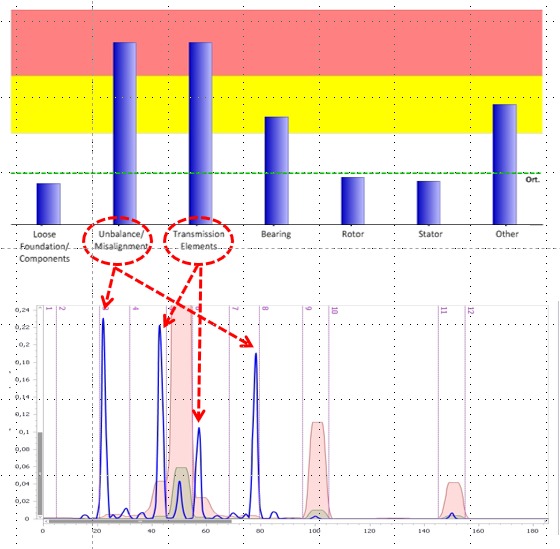
Burnt engine and MCM – The report
The report is issued automatically by the system, without the need for interpretation of an expert.
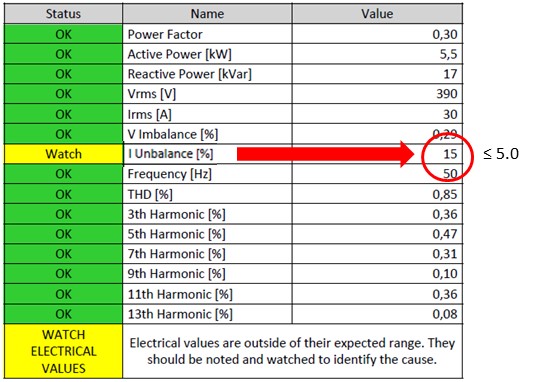
case study – Burnt engine and MCM
In 21 November 2014, an MCM user reported that a monitored engine had burned out.
When internal electrical fault trend data and rotor parameters were examined, it was observed that there had been a sudden increase in these parameters.. MCM monitored for a while and gave the alarm ‘Examine 1’, before the breakdown.
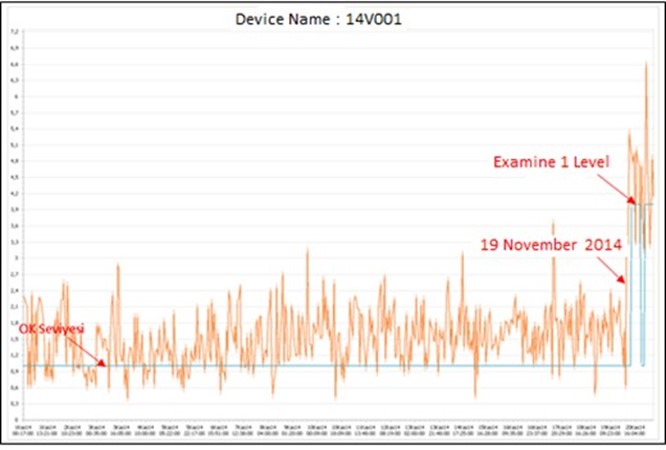
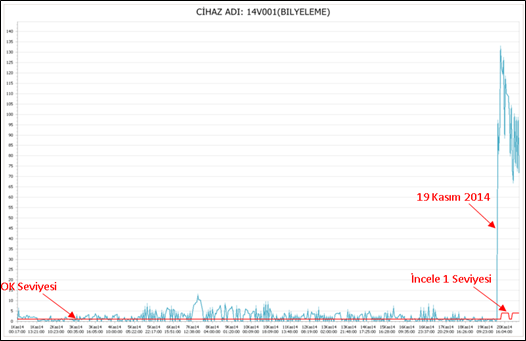
MCM electrical failure parameters (internal and external) are obtained by modeling the motor as an electrical circuit and are extremely sensitive to failures such as decreased winding insulation, gaps in electrical connections, rupture or cracks in the rotor cage or short circuit in the cage.
Considering the increase in the internal electrical failure parameter, the displacement between phase currents and the increase in current balance, it is thought that the insulation problem occurred in the motor windings and consequently the equipment burned.
The figures 5 e 6 display the trends of the current and active energy parameters of the 14V001 equipment that failed the stator windings in 21 November 2014.





